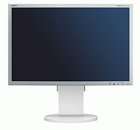unfortunately, your facts are wrong.
LED's use a lot less power for the same illumination. CCFL (cold cathode fluorescent light)s use a lot of power.
and lol, yeah you really dont know much about LCD's - pretty much the ENTIRE power consumption comes from the backlight. the rest is minimal.
Yep.. the whole of the LCDs power consumption comes from its backlight... powering the panel apparently isn't important... At that, i guess panel type doesn't make a difference ether.. I'm sorry, but your wrong and i'm not going to argue, so flame away. Facts are facts man, i don't really know what to tell you, and you do realize there are MANY more facets to a LCD than its back light right?? Also, your point is very poor, since i don't pay close attention to how an LCD draws power i instantly understand nothing about them?? solid point there guy....but if your get your jollies from cutting people down, then whatever. CCFLs use VERY small amounts of power, less that a hot cathode(CFLs, regular fluorescent tubes) which already uses a small amount of power. You obviously missed when many LCD manufacturers switched from hot cathode to cold cathode backlights to decrease power consumption. I will say this, LEDs do have more potential, and we are just seeing them used in applications like this because they have literally just become cheap and powerful enough for this type of application. As the processes behind creating LEDs becomes more efficient we will see LEDs in more applications and they will better suit them as well.
However, there is still an issue behind LEDs for backlighting, which is their production of the color white. There are two ways LEDs produce white light, a blue phosphor coating that emits what looks like white light to our eyes, and then combining red/green/blue LEDs. The latter is the best option, but is more costly and takes up more space, yet still isn't a perfect reproduction of white light. I'm sure at some point this will be overcome as well, but in the meantime, i would think it would effect picture quality. The other issue with color rendering is heat, LEDs are very sensitive to heat and they change their color frequency depending on how hot they are. This can also be a problem because of their thermal runway. If they get to hot, they will go into self destruct mode. Increasing heat will increase resistance and heat will continue to rise and the LEDs will burn out. This is why you see those huge heat sinks on commercial LED lights, cooling is very important. The downside to that is you have to add the cost of whatever heatsink material to the monitor.
As far as gains go, you would still have to stuff a lot of LEDs in the area to cover enough ground to light the whole screen vs a tube. Anyways, i can see about 5-10w in power reduction, and that is it, especially in something this small. This figuring they are using class II 1w emitters.






 I honesty thought he was being sarcastic, but I guess its good to clarify either way.
I honesty thought he was being sarcastic, but I guess its good to clarify either way.